From the Masses to Symbols of Mass

Unlike our early morning original La Paz arrival, a mile or so from the bus station, our departure required exacting location. The bus station itself is majestic and a sentimental tribute to some of the great train stations in Europe. However, with the tight alley approaches, it is completely understandable why an arriving full size coach would much rather skip the navigational headache.
The native people continue to be a spectacle, in a good way. Their blend of earth tones and vibrant colorings both play into the landscape of everyday life and project from it at the same time.
Transportation consisted of an overly packed "half coach length" bus. Every seat was taken, along with any aisle space and the descending internal stairs. This time there was no separation between the passenger cabin and the sole driver. In fact the "shot gun" position and the middle seat were eventually filled for maximum occupancy.
One aspect of South America (and the third world for that matter) that I won't miss is the constant cloud of diesel exhaust, choking transportation time. If the vehicle in front is not generating a nauxious cloud, then with rare exception the body of your passenger vehicle would have convenient body cracking to take advantage of self generated carbon monoxide.
On the banks, separating the channel between Lago de Huynaymarka and Lake Titicaca, modern transportation meets the ancient path. Incredibly, traveling vehicles board wooden (log bound) vessels for ferrying. These longboats are "hand polled" from their resting ramps and then directed by less than fifty horse power outboard motors across the deep channel waters.
Passengers must quay for one of several sorely underpowered ferry boats. (Check out the mini-outboard attached to the back of this departing vessel.)
While waiting in line we witnessed physical confirmation of a local guide's commentary of a week prior. He said, "You can know where a woman is from by how short her dress is." Apparently, the further South one travels, the lower the hem lines. So, presently, we must have representation from both the North and the South, in a single apparel sampling opportunity.
There is stature to elders here in Bolivia. This Senora looked as weathered as time itself, but carried an intrinsic "respect gathering" aura.
Lipika and I wandered down to watch the barge landings, with particular interest for the safe arrival of our coach. This inadvertently allowed us to skip a police checkpoint. Both land masses on either side of the water are Bolivian, but several passengers were delayed and ultimately detained by police for lack of proper identification.
Less than an hour's travel later, I almost missed the Copacabana vista from the racing bus. Now that we were in sight, the driver poured on speed. Could this little lakeside town be the inspiration for the Copacabana song?
Hunger had crept in, as we raced the clock. The Cupola Restaurant closed for lunch at 2:00 pm and we didn't want to miss the treat. The guide books rave not only about the food but the accommodation as well. Today we would have to be sated with amazing gnocchi with goulash and chocolate fondue con freshly cut fruit, as the hotel was completely booked.
The view from the deck did not disappoint either. Copacabana is set between two large hills, (technically mountains as each is over 3,900 meters above sea level) along the southern banks of Lake Titicaca. Charm exudes from this place. It may be the juxtaposition of the millions of La Paz citizens, compared the the quaint thousands here, but Copacabana will seize your heart almost immediately. (Our hotel for the night is the tallest pink building, just a block from the beach.)
Waves of tourists flood Copacabana daily, as it is perfectly situated as the last town before heading into Peru, or conversely the first one between Puno, Peru and crossing the Bolivian border. One of the things that I appreciate about Lipika is her compassion for the "locals" where ever we may travel. Today, she was helping one of our tour agents with her English homework, which just happened to be a Spanish to English translation describing the town's Cathedral complex.
Inspired by the lesson, we headed for a personal viewing of the Moor inspired, Spanish constructed Cathedral. I always seem to waver at the phrase "Spanish constructed" because in reality indigenous people slaved over the construction for a hundred and fifteen years, under Spanish task masters (1605 to 1820). Today, the Cathedral is still the center of city life occupying a complete side of the Plaza 2 de Febrero. Vendors line the entrance gate selling everything from food stuffs to all things Catholica.
A massive outer courtyard surrounds the actual Cathedral, much like a fortress. Here the masses would receive not only their religious indoctrination but also ruling proclamations.
The courtyard, in essence, was the people's Cathedral, complete with alter and impressive arching dome.
While the Spanish ruling class could take full advantage of the inner sanctum.
Of course, since the Spanish Conquistadors were routed over 100 years ago, the current Cathedral is utilized by all the citizens. This Cathedral also houses the wooden Virgen de Copacabana where faith inspires fortune. Apparently, if one stands before the statue and prays for good fortune, it will be granted. This has spawned the interesting practice of bringing miniatures of desired objects before her for petitions of a grander more life size response. Taken a bit further, when a major purchase, such as a car takes place, the new owner brings the car to the gates of the Cathedral to be "blessed" by the priests and sprinkled with holy water for protection while traveling the deadly Bolivian road ways.
An interesting carving marks the large wooden door entrance to the Cathedral. At first glance, the Virgin Mary is being crowned by a priest and blessed by a bishop, while submissive locals celebrate musically. Natively carved, the power structure is detailed and ultimately subverted, without the church's conscious knowledge.
First, the priest and the Bishop are on almost equal footing, as they would have had the greatest personal impact on the local peoples. Mary is not is a position of elevation. Despite the coronation scene, she is reduced and physically beneath the priest and Bishop, an interesting twist to traditional Catholic dogma. Then note the fiddle playing genetically Spanish-mixed character is centered, watching literally over the lowest figures in the relief, indigenous pipe players.
Then there is the subtle "Trump Card" of the entire effort! Notice the flower above the Bishop's head, in the highest position of the carving. This is no random beautification project, but the most sacred ceremonial Inca flower. So despite all the dogma and overt submission in the scene, the Inca artisan trumps the day with a defiant statement of percevereing indigenous beliefs, as this Cathedral's foundations settle on the edge of the most sacred Inca lake and the physical center of their "creation" beliefs.
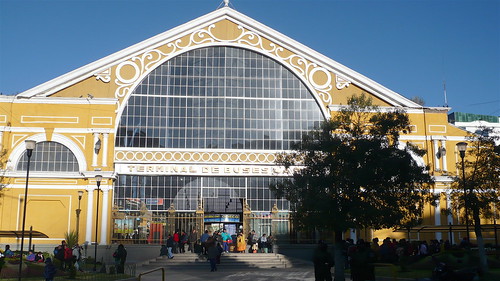


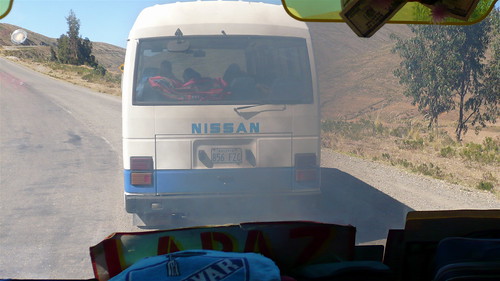

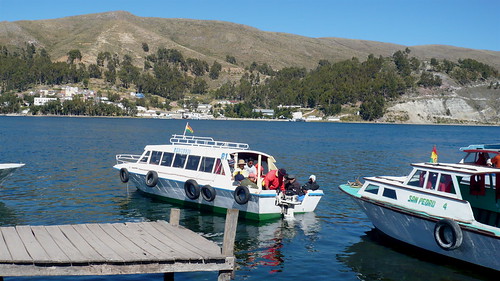


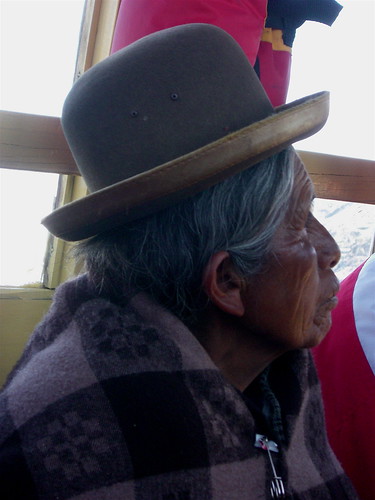




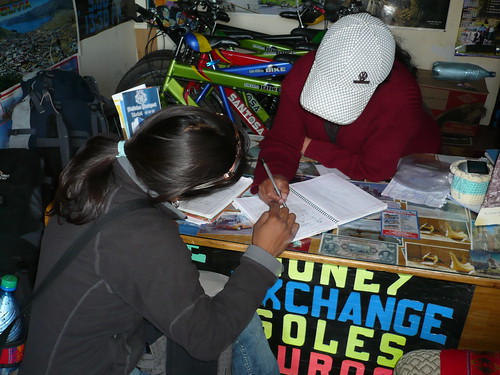



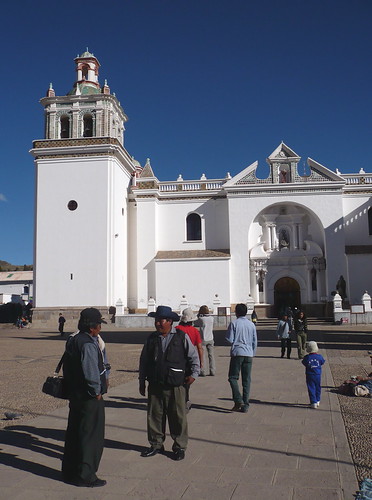
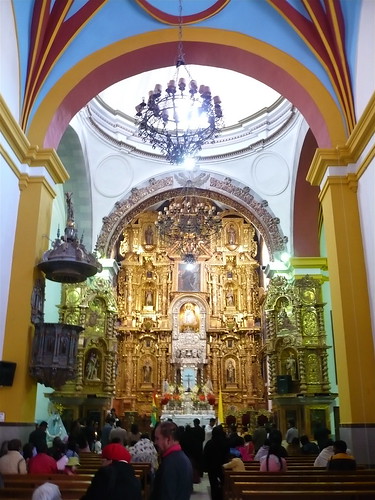
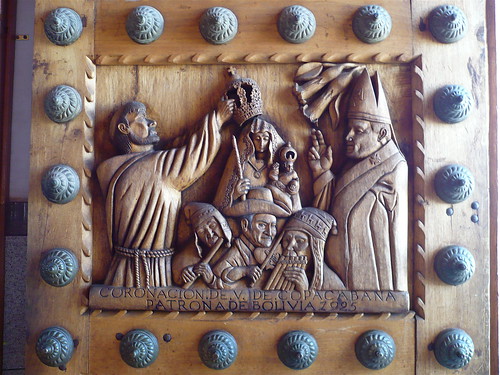
No comments:
Post a Comment